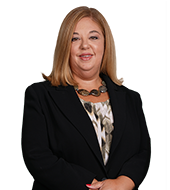COVID-19: Analysis of the COVID-19 Pandemic Congressional Response: Employer Requirements Under the Families First Coronavirus Response Act (FFCRA)
On March 18, 2020, President Trump signed into law bipartisan legislation entitled the “Families First Coronavirus Response Act” (the “FFCRA”). After the House of Representatives passed the FFCRA on March 14, 2020 and approved an amended version addressing technical corrections on March 16, 2020, the Senate passed the measure on March 18, 2020. As the FFCRA goes into effect on April 1, 2020, employers should understand the various requirements and modify applicable practices related to employee leave that may not comport with the new law. Included at the end of this alert are Practice Guidelines for employers to consider as they address the ever-changing landscape in light of COVID-19.
Overview
The FFCRA contains multiple provisions aimed at extending temporary relief through December 31, 2020, to eligible employees affected by the COVID-19 pandemic, which in turn imposes various leave requirements on employers, though only those with fewer than 500 employees. In addition to emergency paid sick leave, the FFCRA amends the Family and Medical Leave Act[1] (“FMLA”) to provide for an expansion of eligibility for leave for certain employees and provides for payments to employees taking unpaid leave for childcare purposes due to the COVID-19 outbreak. Though employers are responsible for funding the paid leave, employers are able to take tax credits for the paid leave provided to employees under the FFCRA. This alert outlines the different leave requirements for covered employers and provides guidance on implementation of the various provisions. For additional analysis of the government response to COVID-19, please see the K&L Gates LLP Public Policy Alert, available here.
Analysis of FFCRA
Emergency Family Medical Leave Expansion
Division C of the FFCRA, entitled the Emergency Family Medical Leave Expansion Act (“EFMLEA”) amends the FMLA and provides for Public Health Emergency Leave (“PHEL”) that extends eligibility for up to 12 weeks of job-protected leave under the FMLA under limited childcare-related circumstances. As background, the FMLA requires employers of 50 or more employees to provide eligible employees job-protected unpaid leave for a duration of up to 12 weeks over a 12-month period. However, under the EFMLEA, employers with fewer than 500 employees, as well as government employers, must provide PHEL to employees who have been on the job for at least 30 days, rather than the 12-month employment period required under the FMLA.
The original version of the bill provided for PHEL in a variety of situations related to COVID-19. However, the FFCRA as passed provides that PHEL may be taken only if the employee is unable to work (or telework) due to a need for leave to care for a child under 18 years of age if the child’s school or place of care has been closed, or the childcare provider is unavailable, due to a public health emergency. Employees who are not covered under the EFMLEA, may still be eligible under the FMLA’s standard provisions for unpaid leave related to COVID-19 to care for themselves or a family member.
Similar to leave taken under other sections of the FMLA, the first ten days of PHEL may be unpaid, and an employer may allow, but not require, that some form of paid leave be substituted. As discussed in more detail below, under Division E of the FFCRA, eligible employees may elect to use emergency paid sick leave during this initial ten-day period. Though the FMLA provides only for unpaid leave, under the PHEL amendment employees will receive payments for leave extending beyond ten days. After the ten days of unpaid PHEL, employees will receive paid leave that will be no less than two-thirds of the employee’s usual pay based on the employee’s regular work schedule, up to $200 per day and no more than $10,000 in the aggregate. For employees with varying schedules, the FFCRA provides that the pay will be equal to the average number of hours per day that the employee was scheduled to work over the previous 6-month period.
Certain employers may be exempt from compliance with Division C by the Secretary of Labor. Exemptions include certain health care providers and emergency responders, as well as small businesses with fewer than 50 employees who can establish that compliance would jeopardize their business’ viability.
As under the FMLA, job restoration is required for employees taking PHEL, unless the employer has 25 or fewer employees and the position held by the employee when the leave commenced does not exist due to economic conditions or other changes in operating conditions of the employer. In these circumstances, employers must first make reasonable efforts to restore the employee to an equivalent position with equivalent employment benefits, pay, and other terms and conditions of employment.
Emergency Paid Sick Leave
Under the Emergency Paid Sick Leave provision in Division E, government employers and employers with fewer than 500 employees must provide emergency paid sick leave (“EPSL”) to an employee who:
- Is subject to a Federal, State, or local quarantine or isolation order related to COVID-19.
- Has been advised by a healthcare provider to self-quarantine due to COVID-19 symptoms.
- Needs to obtain a medical diagnosis or receive care related to COVID-19 symptoms.
- Has to care for or assist an individual who is under self-quarantine or is subject to a quarantine order for COVID-19.
- Must care for a child if the school or place of care is closed or unavailable due to COVID-19.
The Act includes a miscellaneous provision that would allow for EPSL for certain conditions as specified by the Secretary of Health and Human Services in consultation with the Secretary of the Treasury and the Secretary of Labor. Notably, the amended FFCRA allows employers to exempt health care providers and emergency responders from eligibility for EPSL.
EPSL is available to all employees as defined by the Fair Labor Standards Act (“FLSA”), regardless of the length of employment, and would extend to seasonal and temporary employees. Full-time employees are eligible for 80 hours of EPSL while part-time employees are eligible for a number of hours equal to the number of hours they work, on average, over a two-week period. Employees on a variable schedule will be provided an amount of EPSL equal to the average number of hours that the employee was scheduled per day over the previous 6-month period. EPSL is paid at a rate that is the greater of the employee’s regular rate of pay or the minimum wage rate in the employee’s jurisdiction, up to $511 per day and $5,100 in the aggregate, for leave taken on the basis of the employee’s own condition. For employees using EPSL to care for an individual or for childcare reasons, EPSL is paid at a rate that is equal to two-thirds of the applicable EPSL rate, up to $200 per day and $2,000 in the aggregate.
Employees may not carry over EPSL from one year to the next and similar to many state paid sick leave laws, EPSL is not paid out at termination of employment. Further, the entitlement to any EPSL ends on the next scheduled shift following an employee’s return to work after taking EPSL. To note, an employee may need to use additional leave for either the care of a family member or for his or her own eligible condition. It is unclear whether an employee would be eligible to use any remaining EPSL following a return to work if an additional need arose. Therefore, employers should exercise caution before terminating an employee’s eligibility for any remaining EPSL upon return to work.
Employers may not require employees to use other forms of paid leave prior to use of EPSL. For employers with existing paid sick or other leave policies, EPSL is in addition to such paid leave. Similar to many state and local paid sick leave regulations, employers may not require the employee to identify a replacement employee in order to take paid sick leave. Employers may request reasonable notice for the continued need for EPSL following the first workday for which an employee requests EPSL. Finally, and similar to other employer-mandated leave laws, the EPSL provision of the FFCRA contains anti-retaliation provisions and imposes penalties for denial of EPSL in accordance with the FLSA.
Tax Credits for PHEL and EPSL
As passed, the FFCRA provides that the payments made by the employer are refundable if it exceeds the amount the employer owes in payroll taxes for wages paid to employees under either PHEL or EPSL. Specifically, employers are eligible for a tax credit equal to 100% of the qualified PHEL and EPSL wages paid by employers for each calendar quarter. The EPSL credit for each employee would be for wages up to $511 per day while the employee is receiving EPSL to care for themselves, or $200 per day if the EPSL is to care for an individual or to provide care for a child due to school or childcare closures. The amount of tax credit for PHEL wages for each employee is up to $200 per day or $10,000 in the aggregate.
Practical Guidance
Employers covered under the FFCRA should be prepared to implement the mandatory PHEL and EPSL provisions for their workforces. Additionally, employers not currently subject to the FMLA should review the PHEL requirements for eligible employees and prepare to administer leave accordingly. For those employers with operations in jurisdictions where paid sick leave is mandated, the paid leave under the FFCRA is in addition to any paid sick leave benefit currently provided to employees. Covered employers should not modify other existing paid leave polices and should comply with any jurisdiction-specific requirements. Once notice from the Department of Labor is developed, employers should promptly disseminate this to employees, by posting at worksites as well as sending electronically in the event employees are working remotely. Finally, although the FFCRA’s paid leave provisions do not cover those who are self-employed, those individuals would be eligible to receive tax credits of up to two weeks of EPSL at their average pay and 12 weeks of PHEL at two-thirds their normal rate.
As federal, state, and local governments continue to address the evolving COVID-19 pandemic, K&L Gates LLP will provide critical updates along with practical guidance to assist with compliance. Please visit our COVID-19 resource center here.
Notes:
[1] 29 U.S.C. 2601, et seq.
This publication/newsletter is for informational purposes and does not contain or convey legal advice. The information herein should not be used or relied upon in regard to any particular facts or circumstances without first consulting a lawyer. Any views expressed herein are those of the author(s) and not necessarily those of the law firm's clients.






